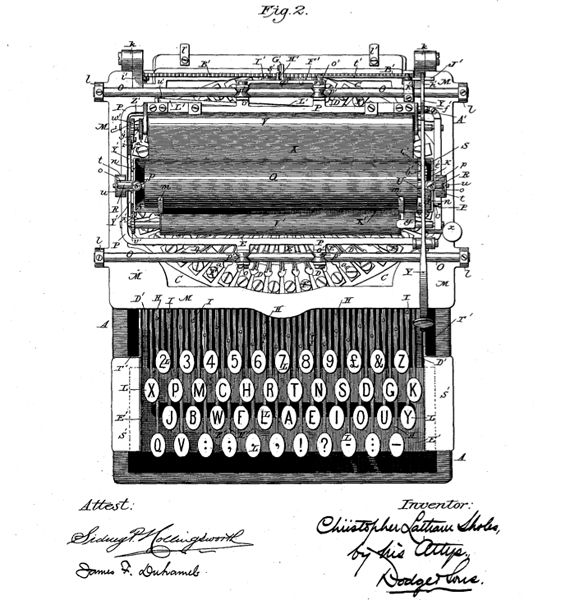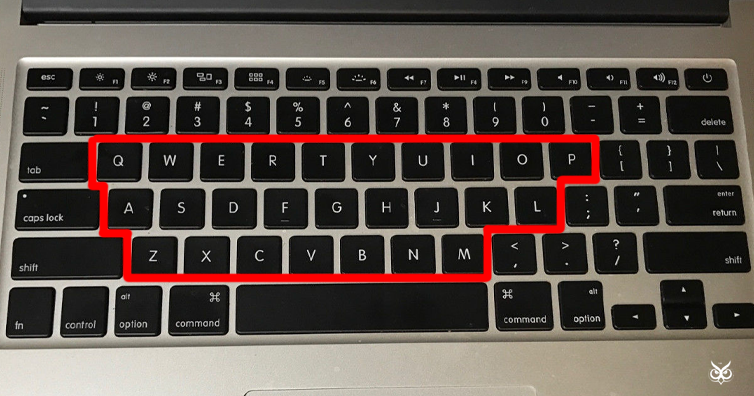A common belief is that the letters on a QWERTY keyboard (named for the first 6 keys in the top row) are mixed up and not in an alphabetical order so that trained typists would slow down and avoid jamming the early typewriters who couldn’t handle a quick typing of common letter pairings.
According to this myth, amateur inventor Christopher Latham Sholes re-arranged the letters on a keyboard so that common sequence of letters, such as “he” or “th”, are separated. Allegedly, this would have prevented the machineries from jamming when quickly typed.
However, this theory has no supporting evidence and can be easily debunked by the fact that the letters forming “er”, the English language’s 4th most common letter pairing, are placed next to each other. Two Kyoto University Researchers though, Koichi Yasuoka and Motoko Yasuoka, propose an alternative solution that makes much more sense than the “mechanical error” theory. It all has to do with translating Morse code. (the article continues after the ad)
In a paper published in 2011, the two researchers suggest that the keyboard’s design was mainly influenced by how the first typewriters were being used. Because early adopters were telegraph operators who needed to quickly and efficiently transcribe messages, they re-arranged the letters to the QWERTY layout as the alphabetical arrangement was not inefficient for translating morse code. For example:
The code represents Z as ‘· · · ·’ which is often confused with the digram SE, more frequently-used than Z. Sometimes Morse receivers in United States cannot determine whether Z or SE is applicable, especially in the first letter(s) of a word, before they receive following letters. Thus S ought to be placed near by both Z and E on the keyboard for Morse receivers to type them quickly (by the same reason C ought to be placed near by IE. But, in fact, C was more often confused with S).
The paper also uses the morse code to further debunk the myth that Sholes rearranged the keys in order to protect his machine from jamming by slowing down typists:
“The speed of Morse receiver should be equal to the Morse sender, of course. If Sholes really arranged the keyboard to slow down the operator, the operator became unable to catch up the Morse sender. We don’t believe that Sholes had such a nonsense intention during his development of Type-Writer.”
Is this the true story behind the origin of the QWERTY keyboard? Well, even though we can’t be 100 percent sure, it’s a well researched theory and makes much more sense than the “no evidence whatsoever” theory of slowing down operators.
BONUS FACT: Regardless of its success, Sholes wasn’t convinced that the QWERTY arrangement was the best design. Although his designs were sold to Remington early on, Sholes continued to develop alternatives and improvements to the typewriter for the rest of his life. This included several keyboard layouts that he claimed to be more efficient. One of them was the following 1889 patent that was filed by Sholes himself, a year before he died, and issued posthumously:

If you like what you read, then you will definitely love this one: Why The “F” And “J” Keyboard Keys Have Raised Ridges?
Photo: eBay
Photoshop: I’m A Useless Info Junkie
Sources: Fact of Fiction? The Legend of the QWERTY Keyboard | On the Prehistory of QWERTY



